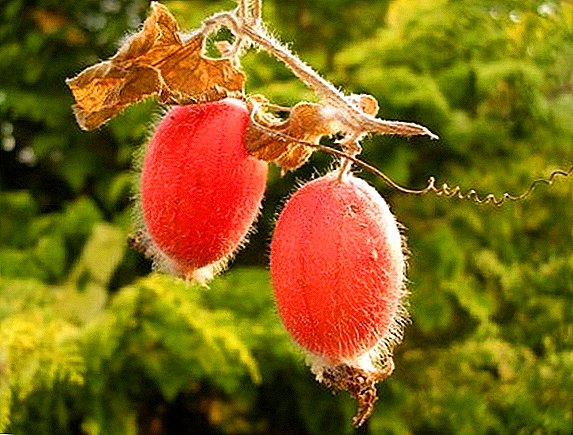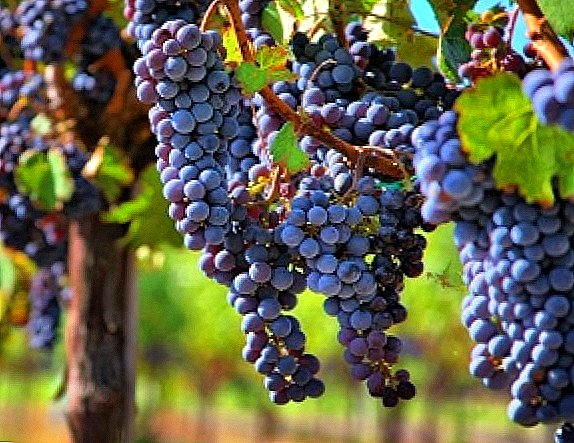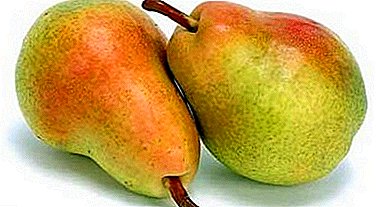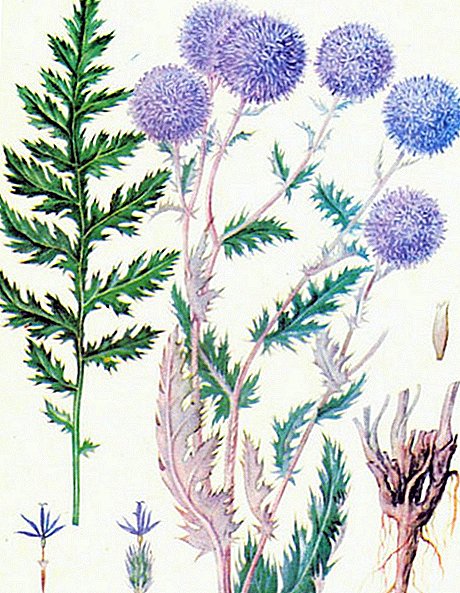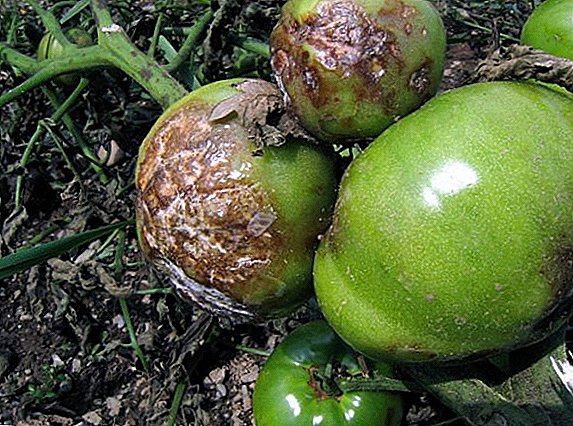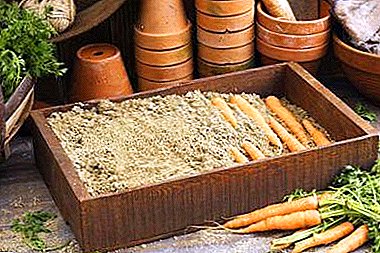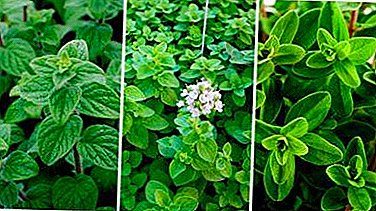
Marjoram is a favorite spice of Western cooking, in our latitudes it is less popular than, say, dill and parsley, and in vain. Many people have not even heard of him, and therefore do not know how and with what to combine it.
Its unique taste and useful properties deserve attention and recognition no less than traditional seasonings. After all, it is no coincidence that in Arabic in the sound of “mardakush” its name means “incomparable”.
What it is?
In Europe, it is known from the XI century. Benedictine monks prepared liqueur on the basis of marjoram, the recipe of which today, unfortunately, has been lost. Later, the spice was used as a snuff, he helped with colds and to enhance intellectual activity. Bouquets of marjoram gave those who admired. Marjoram has found application even in magic as a component of a love potion.
The taste of marjoram is spicy, thin, burning and spicy, a little sweet. and something like cardamom or camphor. The aroma is sweet, floral, spicy. Such a rich palette of taste due to the high content of essential oils and vitamins.
A photo
Next you can see how the spice looks in the photo.





Benefit
Marjoram is not only an aromatic and tasty seasoning. Its useful properties discovered the ancient Greeks. In folk medicine, marjoram is used to treat a variety of ailments.
Marjoram is recommended for a salt-free diet when diagnosed:
- obesity;
- diabetes;
- kidney disease.
Marjoram due to its magnesium content has soothing properties and is used:
- with headaches;
- nervous disorders;
- stress;
- migraine;
- hyperactivity;
- depression and irritability.
Due to the content of vitamins of group B, the plant is effective in the treatment of:
- rheumatoid arthritis;
- sprains;
- bruises;
- sports injuries;
- pains in the joints and muscles.
The high content of vitamin C makes marjoram indispensable:
 with vitamin deficiency;
with vitamin deficiency;- scurvy;
- menstrual disorders;
- fragility of blood vessels;
- cerebral circulatory failure.
Marjoram due to tannins in the composition is considered an effective remedy for gastrointestinal diseases:
- stomach upset;
- pain and cramps
- flatulence;
- lack of appetite;
- reducing the production of bile;
- diarrhea
Chemical composition
All of the above qualities are explained by the rich content of vitamins and trace elements in this plant:
- vitamin B2 - 0.316 mg;
- Vitamin B4 - 43.6 mg;
- Vitamin B9 - 274 mcg;
- Vitamin C - 51.4 mg;
- vitamin E - 1.69 mg;
- Vitamin K - 621.7 mcg;
- Vitamin PP - 4.12 mg;
- potassium - 1522 mg;
- magnesium - 346 mg;
- sodium, 77 mg;
- phosphorus - 306 mg.
In addition, marjoram contains up to 3.5% of essential oils.
Harm
Like any plant, marjoram has contraindications:
- pregnancy and lactation;
- age up to 3 years;
- hypotension;
- increased blood clotting;
- tendency to venous thrombosis;
- idiosyncrasy and allergies to spices or essential oils.
Cooking Application
 In various cuisines of the peoples of the world marjoram is used in both fresh and dried form. Use the leaves and flower buds marjoram. Further we will tell about where and what dishes to add spice, as well as with what it is best combined.
In various cuisines of the peoples of the world marjoram is used in both fresh and dried form. Use the leaves and flower buds marjoram. Further we will tell about where and what dishes to add spice, as well as with what it is best combined.
- Soup - meat, bean, vegetable, mushroom or fish, transparent or thick - will greatly benefit from marjoram, while you can salt the dish less than usual.
- The marjoram gives to meat dishes delicate and noble taste, thanks to it it is used as a component of sausages.
- When preparing pilaf, you can replace traditional spices with a teaspoon of marjoram; it will make the flavor of the dish more intense.
- Thanks to marjoram, the fish becomes spicy and more piquant, and, for white varieties of fish, this is more pronounced than for red ones. White fish aspic does not require other spices if you use marjoram.
- Seafood and fish pastes are unthinkable without this seasoning, which naturally enhances the taste of seafood, and for this one pinch is enough.
- Plain cottage cheese with a piece of marjoram on the tip of a knife will seem sweeter, which will allow you to do without excess sugar.
- A pinch of marjoram, added to spaghetti or a warm vegetable dish, will give the dish a rich spicy taste - it helps a lot, for example, during fasting, helps to diversify the diet and deceive the stomach.
- Meals from cereals will become especially tender and fragrant thanks to this spice, and salt and sweets will not have to be added to them.
- In baking, marjoram will emphasize the taste of the main ingredient, whether it be meat, fish or fruit, and seasoning is needed very little, at the tip of a knife.
- Wine or mulled wine with a pinch of marjoram will reveal a rich bouquet and aftertaste of the drink, and tea or drink from chicory with the addition of this spice will bring more health benefits.
- Even the usual sandwich with toasted sausage, lightly sprinkled with marjoram, will become more refined and appetizing.
- Those who prefer homemade liqueurs and liqueurs are well aware that marjoram gives the drink a special delicate aroma. And in the famous liqueurs "Becherovka" and "Yagermeister", of course, this spice is also present.
- Also on the basis of marjoram, you can prepare the original oil for salads from fresh vegetables.
It is enough to add one or two fresh twigs or half a teaspoon of dry spice to the bottle of oil, and after a week, the excellent spicy dressing is ready for use. Vinegar on marjoram is prepared in exactly the same way.
- This spice is also suitable for canning vegetables and meat.
Marjoram is added closer to the end of cooking or just before serving.
Use in medicine
Medicinal properties of marjoram fresh and dried do not differ from each other, as this grass does not lose its properties during harvesting and storage.
We offer to watch a video about the medicinal properties of marjoram and its application in medicine:
Application in cosmetology
 Fragrant marjoram is famous for its beneficial effects on the hair and skin, so its decoction and oil extract can be used for cosmetic purposes. Is he:
Fragrant marjoram is famous for its beneficial effects on the hair and skin, so its decoction and oil extract can be used for cosmetic purposes. Is he:
- tightens pores;
- strengthens hair follicles;
- destroys dandruff;
- heals skin cracks, moisturizes it.
A few drops of the extract are optionally added to the face cream. or hair products. Optionally, you can add it to the baths for hands, nails and nails.
How to cook at home?
Marjoram can be grown yourself, if there is a summer cottage, and you can buy in the agricultural market. Collection is done in the middle of summer and early autumn in dry weather.
- The plant is washed in a basin with cold water, put out rotten and black shoots, separate the root.
- Then the washed marjoram is tied up in small bundles of 5-6 plants and hung out for drying in the open air in the shade. It is best suited for this east windows or a balcony on the east side. If the weather is rainy, you can dry the plant in the kitchen above the included stove, at a distance of at least a meter.
- The readiness of raw materials comes in a few days, when the leaves will become very fragile. At the same time, the essential oil component should remain in them, it becomes clear when rubbing dry leaves between fingers.
- Then the grass is crushed with a special chaff and stored in a dark place in a tightly closed container.
Others can be added to this spice, such as hot peppers or nutmeg.
The best in taste and aroma are plants from Western Asia. Of the varieties preferred French, Spanish and so-called "wild" marjoram.
Where and how to purchase?
Dried marjoram in bags sold in supermarkets in the department of spices and seasonings, in the agricultural market in bulk. When buying, you need to pay attention to the shelf life of the product and the general appearance of the plant:
- should not be blackened;
- moldy and rotten areas;
- musty smell;
- bitter taste.
The cost of 100 grams of dried marjoram:
- in Moscow: 80-120 rubles;
- in St. Petersburg: 70-200 rubles.
Storage
Dried and chopped marjoram is best kept in a closed glass or ceramic container from which essential oils do not evaporate. Plastic bags and cans are best avoided, as the spice in them is likely to deteriorate, and in metal containers - will oxidize. In a wooden or paper container, the essential oils can be absorbed into the walls, and the seasoning will lose most of its taste value.
Marjoram is stored for 2 to 5 years.. Periodically it makes sense to check if the quality of the spice has deteriorated, and to get rid of the spoiled one.
What spices are combined?
 The best companions for marjoram are:
The best companions for marjoram are:
- Bay leaf;
- caraway;
- sage;
- parsley;
- red and black pepper;
- nutmeg;
- sesame.
They can be added to cooked spice for storage, if the taste preferences have long been settled.
What can be replaced?
If this spice is not at hand, you can replace it:
- rosemary;
- oregano;
- Thyme
They are no less tasty and healthy, but the nuances of each spice are different.
Aromatic and healthy plant marjoram will become a true friend of a skilled hostess. And in order to get the maximum benefit from it, you need to use it in moderation.


 with vitamin deficiency;
with vitamin deficiency;